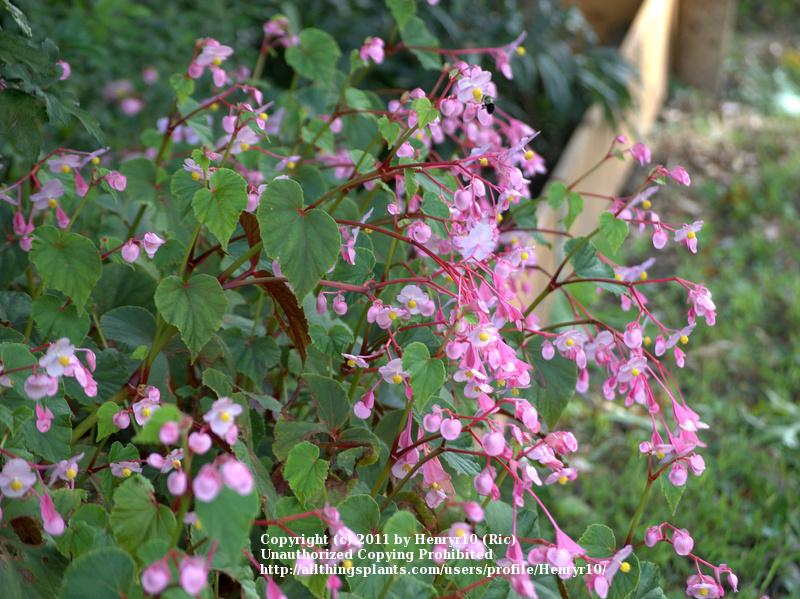By Andrew Bunting, October 12, 2023
Some gardeners might believe that with chillier fall weather, the ornament provided by flowering perennials must depart for the season. However, there are a wide array of flowering perennials that bloom well into the Fall, providing beauty and Fall interest. Plus, many of these varieties are also native, so gardeners can help support local ecosystems while maintaining a stunning autumn garden.
Asters, the best-of-the-best
Doellingeria umbellata, is a large, robust, flat-topped aster with a profusion of clusters of white flowers. This robust aster can grow to 5 feet tall and can spread in the garden forming bold masses. It is a perfect plant for an abundance of flowers in the fall.
Eurybia macrophylla, the big leaf aster, also makes a bold impact in the garden with a slightly more diminutive stature and either white or soft lilac petals. Both the
Doellingeria and the
Eurybia are effective in large, sweeping masses.
Unequaled for its flower power is Symphyotrichum oblongifolium, the aromatic aster. Popular cultivars, ‘October Skies’ and ‘Raydon’s Favorite’ become billowing masses reaching 2-2.5 feet tall. In early October they become covered in lilac-purple to blue, quarter-sized flowers with a yellow center. They are also one of the best asters for attracting pollinators to the garden. The aromatic aster, like all the aforementioned, thrives in full sun.
At the Subaru of America Campus in Camden, the Pennsylvania Horticultural Society uses the smooth aster, Symphyotrichum laeve ‘Bluebird’ for a late season pop of color. The flowers are a stunning powder blue and are held on erect stems 2-4 feet tall. In the wild, it has a broad native range occurring in nearly every state east of the Mississippi River. At Subaru, it is a favorite perennial for its tough urban durability.
Symphyotrichum ericoides, the white heath aster, has small and tight forming foliage. It resembles some of the ground covering junipers. ‘Snow Flurry’ is a wonderful selection that has a profusion of tiny white flowers. This is a great plant to use in a rock garden, spilling over a wall, or as a groundcover in a sunny spot. It can also be used in mass as a ground covering plant.
For the shade, Eurybia divaricatus, the white wood aster is a great choice. It is a great compliment when used in large masses under river birches, Betula nigra. The beautiful cream peeling bark is a nice combination with the small, frothy, white flowers of the late summer to early fall. This is one of the few asters that will thrive in partial to full shade. It combines nicely with many sedges (Carex), as well as foamflower (Tiarella) and the Christmas fern, Polystichum acrostichoides.
The Native Ironweeds
In the last 10 to 15 years the native ironweeds, once considered roadside weeds, have become an important part of the fall garden. This aster relative is characterized by vivid purple flowers. Depending on the species they can be compact plants, measuring just two feet tall, or towering perennials over 12 feet tall.
Vernonia lettermannii ‘Iron Butterfly’ has narrow foliage that turns golden-yellow in the fall. Atop this fine textured plant is an abundance of tiny purple flowers which are great for attracting the late-season pollinators.
Vernonia noveboracensis, the New York ironweed, towers 5-7 feet tall and is a fantastic addition to the back of the flower border. Vernonias are also urban tough and can tolerate considerable periods of drought.
Great Goldenrods
For decades, the goldenrods were falsely accused of being the source of hay fever, which as we now know, was most likely caused by the ragweeds, which flowered at the same time. There are dozens of native species of goldenrods and many cultivar selections too. They brighten the autumn garden with bright, cheerful golden flowers that sit atop the stiff stems. The showy goldenrod,
Solidago speciosa, reaches 3 feet tall with thick, very showy bright yellow flowers.
Solidago sempervirens, the seaside goldenrod, is a native of eastern coastal areas. Because of its tolerance to salt and its ability to grow in sandy soils, it also does well in urban gardens. One of the first goldenrods to be promoted was
Solidago rugosa ‘Fireworks,’ the rough goldenrod. Reaching only 2-3 feet tall with an equal spread, it is an excellent selection for the smaller garden. In early fall, it has open arching panicles of golden flowers that look like explosions of “fireworks.” Similar to this, is the floral display of ‘
Solar Cascade.’ These plants can reach 4 feet tall.
Shade Lovers
The hardy begonia,
Begonia grandis, has an abundance of pendant-pink flowers that are held on loose panicles around the foliage. Reaching 18 to 24 inches tall, it becomes a relatively fast-growing ground cover in shady parts of the garden. The profusion of pink flowers brightens the woodland garden, and the leaves are also highly ornamental. Once the clumps are established, it will serendipitously seed throughout the garden. ‘
Alba’ is a white selection. While most hostas are grown for their exquisite foliage, in the shade garden,
Hosta tardiflora has attractive lance-like leaves, and in early fall has abundant spikes of purple-lavender, tubular flowers. The flowers are a late nectar source for native hummingbirds. Nearly all the toad lilies,
Tricyrtis, are late summer or early fall bloomers.
Ricyrtis macrantha supsp. macranthopsis is perfect for planting in a container or on top of a wall where the pendant foliage can cascade downwards. The stems are covered in tubular, tear-drop shaped yellow flowers. Tricyrtis hirta, the Japanese toadlily, has upward-facing, white, orchid-like flowers on stiff stems with purple-black spotting.
As the home garden transitions from the abundance of flowers in the summer and into the fall, there are many great choices of flowering perennials, such as aster, goldenrods, ironweeds, begonias, hostas and toadlilies, that can be used to extend the ornamental period in the garden. Many of these not only have a long blooming period, but are also native, and serve a variety of ecological functions such as being a host for the late pollinators in the garden.

Andrew Bunting is Vice President of Horticulture at The
Pennsylvania Horticultural Society and leads the utilization of planting and design to promote environmentally sound gardening practices at PHS. Andrew has worked at the Chicago Botanic Garden, Chanticleer Garden, and the Scott Arboretum for a tenure of 27 years. He has received the American Public Gardens Association's Professional Citation, Chanticleer Scholarship in Professional Development, and the Certificate of Merit from the Pennsylvania Horticultural Society. He also serves on the Board of Magnolia Society International. Andrew published his first book in 2015, "
The Plant Lover's Guide to Magnolias".
To learn more about The Pennsylvania Horticultural Society, please visit
PHSOnline.org.

 Andrew Bunting is Vice President of Horticulture at The Pennsylvania Horticultural Society and leads the utilization of planting and design to promote environmentally sound gardening practices at PHS. Andrew has worked at the Chicago Botanic Garden, Chanticleer Garden, and the Scott Arboretum for a tenure of 27 years. He has received the American Public Gardens Association's Professional Citation, Chanticleer Scholarship in Professional Development, and the Certificate of Merit from the Pennsylvania Horticultural Society. He also serves on the Board of Magnolia Society International. Andrew published his first book in 2015, "The Plant Lover's Guide to Magnolias".
To learn more about The Pennsylvania Horticultural Society, please visit PHSOnline.org.
Andrew Bunting is Vice President of Horticulture at The Pennsylvania Horticultural Society and leads the utilization of planting and design to promote environmentally sound gardening practices at PHS. Andrew has worked at the Chicago Botanic Garden, Chanticleer Garden, and the Scott Arboretum for a tenure of 27 years. He has received the American Public Gardens Association's Professional Citation, Chanticleer Scholarship in Professional Development, and the Certificate of Merit from the Pennsylvania Horticultural Society. He also serves on the Board of Magnolia Society International. Andrew published his first book in 2015, "The Plant Lover's Guide to Magnolias".
To learn more about The Pennsylvania Horticultural Society, please visit PHSOnline.org.